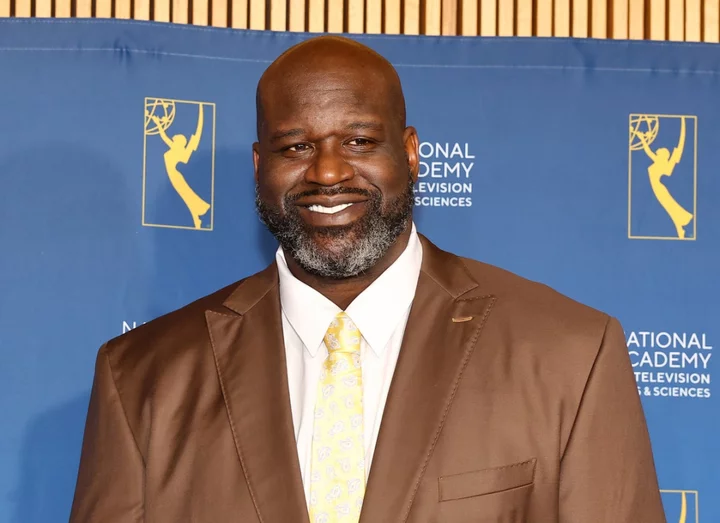
Shaquille O’Neal opens up about his 55-pound weight loss: ‘I couldn’t even walk up the stairs’
Shaquille O’Neal has spoken candidly about his fitness and health goals while opening up about his 55-pound weight loss. The former NBA star, 51, discussed his recent weight loss, and his “crazy goals” for himself, during an interview with Entertainment Tonight, where he revealed that he decided to change his lifestyle after realising he couldn’t “walk up the stairs”. “I was getting chubby and couldn’t even walk up the stairs. I didn’t like the way I looked in the mirror,” he explained. “I was like, ‘I’m gonna lose 20’ and then I was trying to lose 20.” According to O’Neal, who weighed 406 pounds at the start of his journey, he began by exercising, with the Los Angeles Lakers legend then changing his eating habits as well. He told the outlet that his goal is now to be “between 315 and 330 [pounds],” which he said is what he weighed when he helped lead the Miami Heat to their first NBA title in franchise history in 2006. In addition to losing more weight, the basketball star, who is 7ft 1in, also wants to achieve an “eight pack,” although he joked that he’s halfway to his goal. “I’ve got a five-pack now so I’ve got seven more packs to go because I want to take my shirt off on Instagram,” he said. This is not the first time that O’Neal has opened up about his fitness transformation, as he told the outlet in December that he was inspired to get healthy after a friend called him “fat”. “I got a couple people involved - it’s all about eating right. I got some blood work done, a friend of mine called me and said: ‘You’re fat,’ and she gave me this guy’s name, and he did some blood work, and you know, ‘cause I was the athlete - I wasn’t a salad eater. I won’t pay attention to any of that. I don’t care about none of that,” he recalled at the time. According to O’Neal, he also hadn’t known the difference between “a carb and a protein”. “At 50 years old I never knew. So, he was saying you can’t do this, you can’t do that, more vegetables, my iron’s low. And once I just started changing those certain things, it dropped,” he said. Read More Shaquille O’Neal says he follows ‘respectable nepotism’ philosophy when it comes to his children Shaquille O’Neal surprises family by paying for their washer and dryer at Home Depot
2023-09-02 02:51
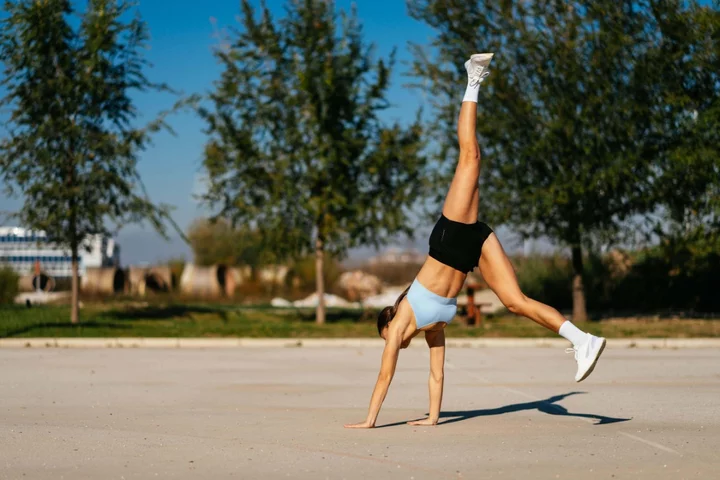
TikTok has gone wild for adult gymnastics – here’s what you should know
Have you always wanted to be able to do the splits or a backflip? Maybe you’ve watched your kids do a gymnastics class and thought, ‘Wow, that looks so fun’. Adult gymnastics is gaining some serious popularity online, with the TikTok hashtag #adultgymnastics getting over 209.5 million views. Influencers such as Anna Archer – who has over 300,000 followers on Instagram and creates content surrounding lots of different fitness experiments – and stunt woman Corinne Nicewick have shared clips of their experiences of trying out gymnastics as an adult. Nicewick, despite being a talented stuntwoman, has shared clips of how challenging she has found the sport, with viewers finding her attempts both funny and encouraging. Gymnastics has put some famous faces in good stead for other fitness-related challenges, with gymnast Beth Tweddle winning the 2103 series of Dancing on Ice and Ellie Downie, GB gymnast taking on the gruelling SAS: Who Dares Wins reality show in 2023.So, what do you need to know before you get involved? How does adult gymnastics work? Can anyone do it? Classes have been steadily cropping up across the UK encouraging adults of all abilities to get involved in gymnastics, and unless you have a health problem or injury that may restrict you from doing so, anyone can get involved. It is not so dissimilar to exercises you may already do like plyometrics (explosive body weight resistance exercises like box jumps), CrossFit or yoga. “Gymnastics is a series of different exercises that test your strength, mobility, flexibility and agility,” says Sofia Zolobova, instructor and gymnastics expert at Gymbox. “It’s also a lot of fun, incorporating lots of different floor, beam and hoop exercises,” she explains. This element of variety can bring a more fun, playful element to your workout routine. What are the health and wellbeing benefits of adult gymnastics? Gymnastics will give your body a really different workout and improve your strength, mobility and balance. “Strength and mobility are both very important as we grow older,” says Zolobova. “Gymnastics uses your own body weight, so not only do you get stronger, you move better. For example, to be able to execute a hand stand you need great shoulder mobility,” she explains. “With our modern tight shoulders, gymnastics can be helpful in improving our posture.” How do you get past being scared? As a kid, doing a cartwheel and taking a tumble doesn’t seem so threatening, but as adults we are all a bit more scared of getting hurt. Instead of falling into the trap of fear, embrace the playfulness of it. Zolobova says: “It’s a really fun way to exercise. It includes handstands, cartwheels and frog jumps, letting you unleash your inner child. It empowers you to do cool tricks as an adult and work up to a certain goal. It’s also a great fear fighter – sometimes you just have to let go and trust yourself.” What should we be careful of in adult gymnastics? Your fitness and flexibility may not progress as quickly as they might have done as a child. “Children are naturally more flexible than adults, so when undertaking gymnastics for the first time keep this in mind. Take things slow and one step at a time – you can always build up strength and flexibility with consistent practice,” explains Zolobova. How do we protect our backs and joints? Putting your back out or hurting your joints is a very real fear as an adult. Zolobova says: “Stretching should never be skimped on and should be thorough and dynamic [involving movement]. It’s also very important to make sure the body is warmed up before undertaking any gymnastic moves, a light jog and jumping jacks are great ways to get the muscles warm fast.”
2023-08-30 21:46
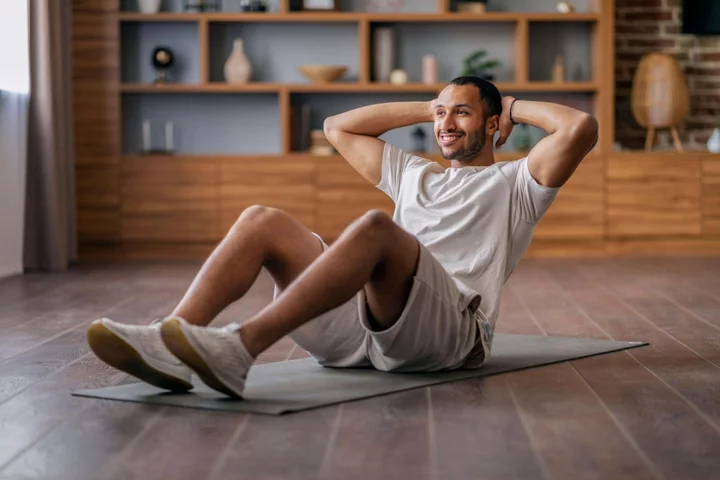
3 great abs exercises that aren’t crunches
Most of us have been guilty of doing a huge number of crunches in the hope of making our tummies trimmer. Then, two weeks later, we’re disappointed nothing seems to have changed. “Think abs and we tend to think ‘six-pack’ (visible or not) – the long muscle that extends along the front of the abdomen,” says PT and fitness expert, Laura Williams. “This often makes crunches our go-to move when it comes to the tum. But the abdominal muscles also include your waist muscles – your obliques – and one of your main core muscles, the transversus abdominis.” Targeting these areas, she says, with a variety of exercises, will help to strengthen all the important muscles of the abdominal area, as well as those in the upper back and hips, helping with everything from a stronger core to preventing injury. 1. Heel Tap Why: Works core muscles. How: From a lying position with legs bent above hips, lower one heel towards the floor, then lift back up. Change sides. Do a total of 12 lowers. Tip: Try to keep your back flat on the mat. 2. Seated Sprinter Why: Works the waist, hip and thigh muscles. How: From a seated position, with both legs off the floor, extend one leg out in front of you and bring the opposite arm towards your inside knee. Repeat on the other side. Do a total of 12 twists. Tip: Keep your torso lifted throughout. Place feet on the floor to make this easier if needed. 3. Pulsing Side Plank Why: Works the shoulder, hip, thigh and waist muscles. How: Lying on your side, raise your body into the air with your weight on the side of your foot and your bottom arm. Rest your top arm on your bottom shoulder and lower your body a short way to the ground before pushing back up. Do 15 pulses. Change sides. Tip: Reduce your range of movement if you fatigue. Read More Charity boss speaks out over ‘traumatic’ encounter with royal aide Ukraine war’s heaviest fight rages in east - follow live Twiggy: I did not plan to get into modelling ‘Women short-changed as 65% of weekly working hours ignored in official data’ How to wear the casual tailoring look in summer
2023-08-03 16:18
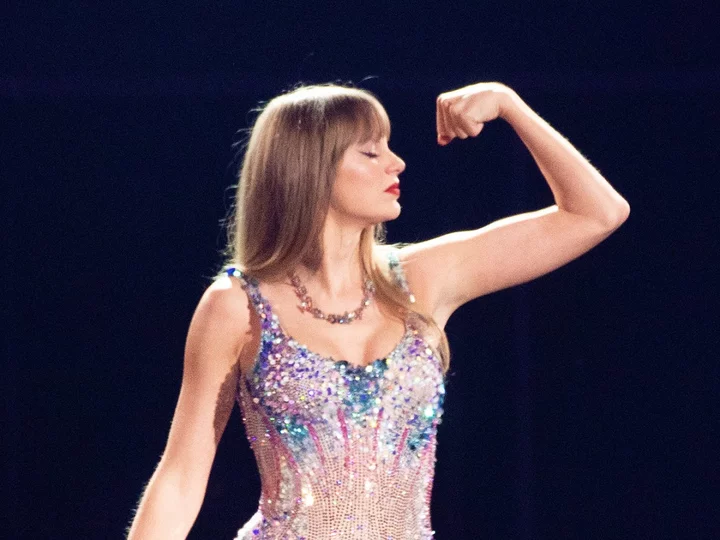
My Taylor Swift exercise class has led me down a luxury fitness rabbit hole
Amid flashing strobe lights at a SoulCycle class in Notting Hill, our instructor MJ stands on a platform, his baseball cap flipped backward and his facial hair trimmed into designer stubble, looking as if he’s straight out of a boy band. “I’ve had a f***ing s*** day and I didn’t want to come to work,” he says, softly, through his head mic. “But I’m so glad I did, as the energy is bringing me to life!” Everyone around me – women between the ages of 25 and 35, all of them dressed in one-shoulder leisurewear – roars in response. “Sit up tall, don’t let anyone make you feel down,” MJ continues. “You’re all legends, don’t let anybody judge you!” I pause for breath after yet another manic burst of energy cycling on the spot. Then we have to pick up dumbbells while atop stationary bikes and do a choreographed workout to a Taylor Swift song. This special Swift-themed class is taking place at 8.30 on a Monday night and in the same venue where First Lady Jill Biden and Rishi Sunak’s wife Akshata Murty attended a spinning class together after King Charles’s coronation in May – reportedly with 10 security guards in tow. I feel slightly out of my depth. I spent two hours looking for my lycra leggings and I’m totally unfit. Apart from walking my dog, I haven’t done any real exercise since 2017, when I had a go at clean eating and did a few weeks of high-intensity training at the gym. But now I’m ready for SoulCycle’s “unique mind-body-soul experience”. This leap back into exercise is partly inspired by Apple TV+’s dark comedy Physical, which is returning for its final season next month. It’s about a housewife played by Rose Byrne who battles her demons and a vicious and self-critical inner voice while finding solace in aerobics. Could it work for me, too? Is exercise the answer to my endlessly spinning mind? Would it serve as an instant catapult into a world of empowerment and success? Everyone in this class knows the words to every Taylor Swift song that booms from the speakers. “Drop everything now/Meet me in the pouring rain”, she sings on “Sparks Fly”. “Kiss me on the sidewalk/Take away the pain.” But all I can think about is the pain I’m currently in. We’re wearing special shoes that click into the pedals of the bike, so it’s not easy to detach oneself. But soon I become grateful for it: if I’m superglued into this class, I can’t give up so easily. As MJ says: “No struggle... no progress”. It doesn’t matter if you can’t move the wheel at the front of the SoulCycle bike, or if you’re peddling down on it like a gazelle; if you’re sweating and panting, you’re part of this love-in. And wow, it feels great. I’m not alone in adoring it, and some of my fellow riders were here even earlier, for “part one” of a class modelled after Swift’s setlist on her current US tour. (Each class costs £26, while a renewable package of four is £86, or eight at £160). It’s a little pocket of joy I knew nothing about while I was sitting at home snacking in front of my laptop and gaining weight. As I leave the SoulCycle studio and wander into the night, I take a deep breath. It feels good to be back in the saddle – even though my legs are like jelly. I have to ask my friend to drive me home because I’m not sure I’ll make it on foot. There are a few reasons I haven’t been hitting the gym, or even doing the occasional relaxed yoga class. Having children on my own has been an intense journey. For years my idea of exercise has been holding a baby or running after two kids in a park with an unruly dog. But when I read a few different headlines lately (“Fit and fabulous at 54: Jennifer Aniston emerges from her new workout class”; “Nicole Kidman, 56, flashes her incredible abs in revealing black dress”), I felt a pang of guilt. These women are older than me but super fit. My daughters, aged five and seven, are both at school now, so there’s no excuse for being so inactive. I had some blood tests done and my cholesterol is creeping up. I’ve been told I need to give up sugar and take up exercise. How can I be a good role model to my kids if all they do is see me eating the chocolate rolls meant for their pack lunches? And where do I even begin with fitness? After the excitement of my Taylor Swift class, the idea of strolling along to my local Virgin Active feels mundane. I ponder whether it’d be easier to stay fit if I was super-rich. I can see myself signing up for four workout sessions rigged up to an electrical current. Because why not? I can’t possibly afford the bespoke, members-only gym Bodyism in London’s Westbourne Grove, whose clients include heiress Tamara Ecclestone. It caters for high-intensity, low-impact training, with top-tier packages costing £23,000 a year. More affordable, though, is their class membership – which costs £1,500 a year for 72 classes and promises to help elongate and tone the body. But it’s also full of the clean-eating squad – I might not fit in. Then there’s London’s BXR, a private, boutique boxing-themed gym that’s spread over two floors. From the street below I can glimpse a massive boxing ring behind enormous glass panels – a manifestation of the idea that celebrities feel they live in a goldfish bowl. It’s also packed with A-listers who get free guest passes while staying at the luxury hotel Chiltern Firehouse that’s located opposite. Membership costs from £2,500 a year and up (by a lot), and the Vogue editor Edward Enniful and fashion designer Julian Macdonald are apparently fans of BXR’s Versaclimbing – a high-intensity, low-impact workout on a Versaclimber. This cardio fitness machine has a 75-degree vertical rail with pedals and handles that mimic the natural motion of climbing. When I hear that the machine burns up to 800 calories in a 45-minute session – well, I’m on the phone to the bookings team in a flash. Unlike treadmill or spin classes, it’s exercise that is full body but low impact – meaning it “minimises unnecessary stress or trauma to your body”. At the state of the art Repose, a wellness clinic in London’s High Street Kensington with members including Made in Chelsea’s Millie Mackintosh, the speciality is “anti-gravity fitness”. It might sound unusual to exercise from a silk hammock suspended from the ceiling for £40 a class – but sessions include pilates, suspension fitness, air bar and both restorative and aerial yoga. Models and celebrities, including Poppy Delevingne, are also queuing up for personal training at London’s E-Pulsive, which costs £85 a session. The electrical muscle stimulation class (EMS) sees you strap yourself into a full-body vest that zaps you with low-frequency electric impulses to manually contract your muscle fibres while you exercise, increasing the intensity of your workout. It seems ideal for people like me who are too busy to exercise but who want superfast results – apparently, a 20-minute EMS workout burns 500 calories and can offer the same results as a 90-minute high-intensity gym class. It sounds like heaven. Then there’s roller-skating at model Liberty Ross’ glamorous Flipper’s Roller Boogie Palace in West London or New York – the original LA Flipper’s in the 1970s was run by Ross’s dad Ian Flipper-Ross, and was so associated with glam fitness that it was dubbed “Studio 54 on wheels”. A one-to-one beginner’s class at the new skate school costs £50, or £35 in a group lesson of up to 12 skaters. Or you can just book in for a general skate with your kids – which kills two birds with one stone as they have fun while you burn calories. A two-hour skate session for adults starts from £15.50 and from £11.50 for children. All of this sounds great – but if I went for a workout schedule of my choice, I can’t see it totalling less than £30,000 a year. Bearing in mind that exercise is addictive and makes you feel good, it might be far more in the long run, too. It’s also a tad out of my price range – I don’t plan on dropping into Equinox on Kensington Roof Gardens or the Bulgari Hotel gym any time soon. Instead, I can see myself signing up for four workout sessions rigged up to an electrical current. Because why not? If money wasn’t an obstacle, I would install a gym and a pilates studio in my own house, with a cryotherapy chamber and a personal trainer on tap. But until then, I plan to start running with the dog, my two kids behind me on their scooters. It’s far cheaper and – unlike the late-night Taylor Swift class – won’t require a babysitter. Read More I keep forgetting my dog’s birthday – could a luxury pet party make it up to him? ‘I’m here anyway, why not?’: My non-surgical facelift has got me thinking about more procedures I’ve never had a platonic relationship with a man – sex can’t help but get in the way Husband fired from family business after wife roleplayed with reborn dolls Montana Brown explains why she chose a home birth as a ‘non-white person’ 8 healthy habits to help you live longer – according to a new study
2023-07-25 13:57
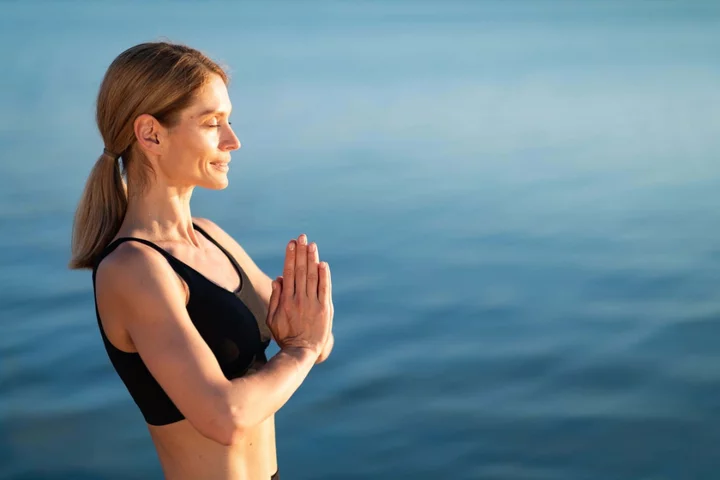
Get up and glow with this energising morning workout
Fitting in a workout when you have a busy life can be hugely challenging. But what if you set the alarm just ever so slightly earlier and nailed it first thing? “Morning exercise can improve productivity and focus, boost energy levels and help you maintain better posture,” says PT and fitness expert, Laura Williams. “And whether you spend the day at your desk or on your feet, working the muscles of the core is an important addition to any exercise routine,” she continues. “Weak core muscles can make it easier to pick up poor posture habits that might lead to aches and pains. A weak core can also leave you more vulnerable to injury. “A strong core, on the other hand, not only makes everyday movements easier, it improves stability and can improve sporting performance.” Add this short routine to your morning run or walk, or try as a standalone workout before heading into the day. Bird Dog Why: Helps strengthen the muscles of the back and core, and improves stability. How: From an all fours position, lift one leg and opposite arm in the air and briefly hold. Maintain a straight spine. Do 12 repetitions. Tip: Avoid lifting your arm and leg too high (this will help you maintain a flat back). Single-Leg Stretch Why: Works the abdominal muscles. How: From a lying position, lift your head and shoulders off the floor. Bend your leg and bring your knee towards your head, placing hands either side of your knee. Extend the other leg out in front of you a few inches off the floor. Switch sides. Do 10 repetitions. Tip: Place your head down if you feel this in your neck. Leg Pull-Down Why: Strengthens upper body, core, thigh and calf muscles. How: From a push-up position with weight on your hands and balls of feet, lift one leg into the air just below hip height. Change sides. Do 10 repetitions. Tip: Avoid lifting your leg too high. Keep your spine straight and your hips still. (Modifed) Roll-up Why: Helps strengthen core muscles, and the muscles at the front of the hips. How: Sit with legs bent, feet flat on the floor and arms outstretched at shoulder height. Drawing the stomach back towards the spine (but without holding your breath) roll slowly back a little way towards the floor, before returning to your starting position. Do 3-5 repetitions. Tip: Place hands behind knees for added support as you roll.
2023-07-18 20:50
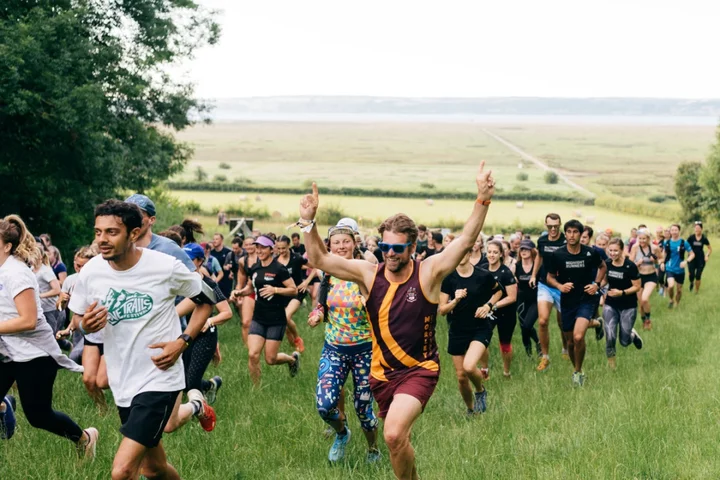
What is trail running and should we all be doing it?
With so much of the gorgeous countryside on our doorsteps, or a train ride away unexplored, we all are looking for new ways to get out and about. Trail running could be the adventurous workout that helps us do just that, as it combines hillwalking, running and hiking, taking runners to remote corners of the planet, and travelling the world in their trainers. With sports brands like Nike, Salomon and Vivobarefoot placing an increasing emphasis on their trail options for runners, and a gradual increase in Google searches for ‘trail running’ over the past five years, what actually is it? “Technically speaking, trail running is a form of running that takes place on varied terrains, away from paved paths or tracks,” says Jodie Gauld, run leader for Love Trails Festival. “However, it’s so much more, it’s a special feeling and a welcoming community.” The benefits “I find trail running very calming, and my focus will be very present. You’re typically in nature, so rather than modern distractions like cars, bustling streets and flashing signs, you can instead be in the moment of your running and in awe of your surroundings, which can give life a new perspective on what really matters,” Gauld reflects. There is less focus on speed and more on experience. “Trail running can also be very playful. It’s typically less serious, because the nature of running over varying terrains and up and down different gradients, means pacing and timing are less controllable or comparable,” she says. “Then, even if you hit a path with a good rhythm, you still have to concentrate, because there could be obstacles. You can hit an ultimate high – your focus becomes super-zoned, while your pace is good and you feel like you’re flying.” It’s easy to find community in trail running, because it’s an equaliser. “Because trail running is less about pace, it’s really inclusive. Seriously, if you do a trail race, the first question won’t be about your time, it’ll be about your experience,” says Gauld. “These factors and so many more, mean that trail running attracts a wonderful, supportive community. I’ve run all my life and have been knowingly trail running for over a decade, and don’t think I’ve ever met another trail runner who hasn’t been encouraging and friendly.” The required kit “While road shoes will be fine on hard-packed trails, you’ll get even more fun with a pair of trail shoes. Trainers specifically designed for the trails will have grip for the varying terrains, and will save you slipping around,” Gauld continues. When looking for the right shoes, Ben Le Vesconte, head coach at Vivobarefoot says “Look for wide toe boxes which allow your toes to spread, to ensure you remain balanced and stable on the trail.” Next, he recommends looking for thin soles, so you can feel the trail underneath your feet. “It will help you feel the changing terrain, allowing you to react quickly and improve your stability. The more cushioning you add, the less you feel. “Think about the grip you choose, typically thicker and longer lugs [small points of raised rubber lining the outsole] are best for muddy terrain, with smaller lugs best for firmer terrain. If it’s wet weather or waterlogged terrain, you want a shoe that drains well and for the heat, it should be very breathable,” he explains. Your kit is more important than it is for road running, because you’re likely to be away from access to help, and there are more things that can potentially go wrong. “With this in mind, I typically take my running vest or a hydration pack, no matter how short the distance, in which I’ll pack my phone – for photos but also safety – water, snacks, a foil blanket, a basic first aid kit, a waterproof and possibly spare layers,” says Gauld. “I also have a GPX watch, mainly for the mapping tools, but this is expensive, and there are loads of accessible mapping apps on phones now.” The risks “In a lot of trail races, there will be a kit list – this will be for safety reasons and encourages respect in nature where the conditions can change very quickly. I started a race in nearly 30-degree heat, and within just a few hours, we were in hypothermic conditions and hail storms. I finished that race – while others more experienced than me dropped out – because I had all the kit,” Gauld reveals. “Of course, like any activity, there are things to be wary of. When you’re starting, take your time and get used to the uneven and varied terrain,” says Matt Buck, a trail running coach, owner of Running Adventures and guide runner for Love Trails Festival. “Make sure you take a friend, or at the least tell someone where you are going, and always have a phone on you in case you need to call for help. Take it slow, and you will be fine.”
2023-07-18 15:18
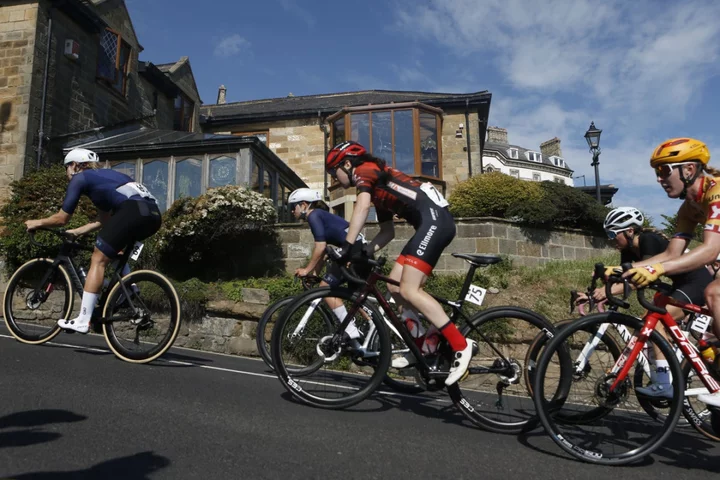
These are the women making waves in the cycling world
With the Tour de France Femmes kicking off on July 23 for a week of thrills, cycling and entertainment, it will also be highlighting the women making this sport what it is. In its second official year as the Tour de France Femmes, races of this calibre have happened in the past, but never on such a global stage. So, what is happening in the women’s cycling scene, how did we get here, and why does it matter?The women changing the game Women are working hard to bring the sport to people of all backgrounds. “The Amy D Foundation, Black Girls Do Bike, Get Women Cycling and Little Bella’s are all fantastic organisations, helping and encouraging women – and young girls – to get into cycling in spite of age, race and background,” explains triathlon cyclist Kate Dunbar. This year’s Tour de France Femmes will have a determined line-up of women championing the sport. Who should we look out for? “Annemiek van Vleuten was a fantastic contender in 2022, and I expect her to do well again this year. It’s her final year ahead of retirement, so she will want to do well,” says Dunbar. “The course this year is suited to van Vleuten’s skill set and she will have a stronger Movistar team to support this target, including Sarah Gigante and Liane Lippert.”A growing sport There has, in recent years, been a marked increase in the interest of this sport. “There is, without a doubt, a rising interest in women’s cycling,” says Amanda Braverman, global director of brand marketing at cycling tech brand, Hammerhead. “With more events geared towards women’s cycling and growing viewership in the Tour de France Femmes year on year, we’re seeing measurable gains in both interest and access to the sport.” “But we can’t ignore the fact that The Women’s Tour in the UK was cancelled, even though sponsors saw a huge return on investment in 2022, and the Women’s World Tour race Vårgårda, West Sweden was cancelled permanently after 25 years,” says Dunbar. “Even though we are seeing bigger efforts from organisations and the industry as a whole, as with most women’s sports, the Tour De France women’s tournament is still vastly overshadowed by the men’s – we still need more support and encouragement to boost women’s cycling,” she stresses. Cycling as a tool for liberation There is an important link between cycling and women’s liberation, that goes back a long way, beyond racing, to basic transportation. “It gave women social mobility and allowed them to travel faster and further than ever before. They could cycle further for work opportunities, and it also advanced fashion, as women needed cycling-suitable clothing. It allowed women to take control of their fitness and health in an easy way,” says Dunbar. Women’s cycling also subverted norms. “Cycling challenged femininity in the late 19th century, and bicycles were used heavily to support the English suffragettes movement. The bicycle became – and to this day remains – a symbol and a tool of female empowerment, independence, freedom and opportunity,” says Braverman. Trailblazers Some hugely inspiring women came before today’s Tour de France Femmes stars. “Some of the first women to get involved in cycling were true trailblazers, cycling as early as the late 1800s,” says Braverman. “Montreal-based Louise Armaindo raced on the high wheel, also known as the penny-farthing, which was much more dangerous than the modern bicycle. Armaindo set the North American long-distance record in 1872, and was praised as “the champion female bicycle rider of the world”. She also credits ‘The Big Five’ – Lizzie Glaw, Helen Baldwin, May Allen, Tillie Anderson, and Dottie Farnsworth – an influential group of female cyclists who raced in the 1890s, fitting their racing careers into busy lives that often included their families and other jobs. Today, there’s no denying defending champion van Vleuten leads the modern ‘big five’, but who else will be in the mix? Lorena Wiebes is likely to have another great first stage, Elisa Longo Borghini will give it her best shot, alongside the phenomenal Demi Vollering, and maybe Juliette Labous will make even more progress this year. Whatever happens, we are surely in for an exciting week of women’s sport.
2023-07-17 16:26
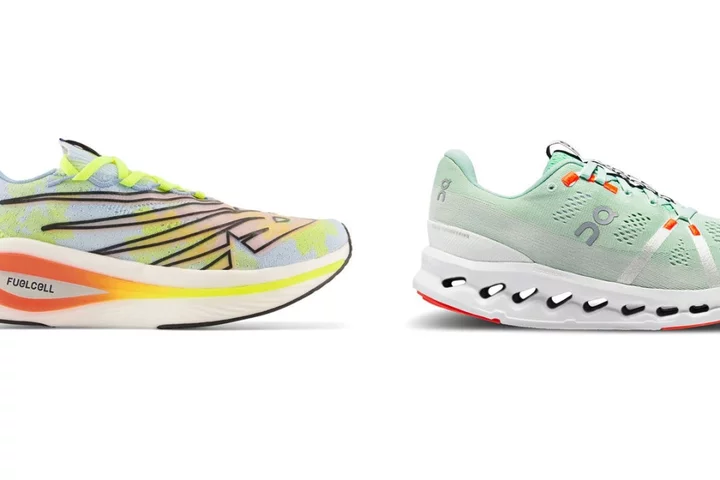
6 of the best new running shoes for summer
Looking to upgrade your running shoes this season, or kickstart a new jogging regime with some swanky new kit? We put these recent releases from a range of top running brands through their paces… 1. Asics Gel-Nimbus 25, £175, asics.com The technical bit: Billed as ‘the most comfortable running shoe’ following consumer tests, Asics have taken cushioning to the max with the Gel-Nimbus 25. Lightweight foam and PureGEL pockets in the soles promise enhanced shock absorption for softer landings and smoother transitions, while the stretchy tongue and collar promise an adaptive fit and stability. The rundown: Despite the super chunky soles, these shoes are pleasingly lightweight. The fit feels a little snug at first (you may want to try them on in store for size) but once I get running, my feet feel very stable and supported. What’s most noticeable about the cushioning is how it supports the whole of the foot at every part of the stride – from striking the concrete to take-off – making for a confident and comfortable run. 2. On Cloudsurfer, £150, On-running.com The technical bit: Ons are known for their revolutionary midsole designs, promising the sensation of ‘running on clouds’ – and the On Cloudsurfer features the brand’s latest design enhancement, CloudTec Phase®, for the ‘smoothest ride’ yet. They’ve upped the sustainability stakes too, using 95% less water in the dying process (compared with conventional methods) for the 100% recycled uppers. The rundown: These are hands-down the most comfortable running shoes I’ve ever worn! They’re so light and flexible, I barely knew I was wearing them – apart from the fact my feet felt super bouncy. They also look very stylish and are easy to clean, which is a bonus. 3. Nike ZoomX Invincible 3 Flyknit Women’s Running Shoes, £169.99, Sports Direct The technical bit: Designed for road running, the design details promise to help reduce injuries, with very thick cushioning a key feature of the rubber soles, along with Nike’s ZoomX midsole technology and lightweight Flynit uppers. The rundown: I could definitely feel the benefits on my longer road runs, thanks to the added comfort and support. My feet and knees felt less achy than usual. It did take me a while to get used to the wide sole design, however, as I’m used to a narrower shoe. But for comfort pounding the pavements, they’re a win. 4. Men’s Featherswift Trail Running Shoes, £90, Helly Hansen The technical bits: These trainers are great for anyone new to trail running, designed with lots of support and cushioning, while remaining light and flexible. And if you’re looking for sustainability, they have a 70% recycled upper, including recycled laces, lining and webbing, as well as zero-waste design elements. The rundown: As described, running in the Featherswifts is light and easy. They have a brilliant grip – which is handy, as all the woodland areas I run in seem to be pretty slippery at the moment – with a good support structure around the heel. As someone who’s prone to ankle rolling, they’re stable enough to give you confidence when running off-road, although they could look a bit more interesting for the price. 5. London Edition FuelCell SuperComp Elite v3, £220, New Balance The technical bit: Made for ‘marathon runners who never let up’, the two-layer FuelCell midsole and carbon fibre plate is said to deliver energy return. The one-piece integrated tongue also ensures a secure and breathable fit. The rundown: With a design inspired by the TCS London Marathon, the look might not be for everyone. These trainers are super expensive and attention-seeking, but they do make you run like a dream and the bounciness is unreal. They somehow seem to make your stride longer, higher and faster (apparently, that’s down to the FuelCell foam, which delivers a ‘propulsive feel’ to help drive you forward, and the energy-boosting carbon fibre plate geometry). If looking cool is more important to you, you might prefer to downgrade to the London Edition Fresh Foam X 880 v13 (more affordable at £140), but if distance is your thing, you won’t regret buying these. 6. Women‘s KIPRUN KS900, £89.99 (were £99.99), Decathlon The technical bit: Designed with longer runs in mind, these trainers promise a cushioned sole – thanks to the new MFOAM cushioning – and extra grip, perfect if you’re going cross-country on wet terrain. With a wider sole than other trainers in the KIPRUN range, these shoes are all about delivering stability – and with the power of your run distributed more evenly across the sole, it aims to keep you comfortable as you clock up the miles. The rundown: I find some running shoes too flimsy, in a bid to be as lightweight as possible. This model strikes the balance perfectly between feeling sturdy enough that my feet were supported, while still being light – so I wasn’t weighed down. As promised, the sole felt comfortable and springy, with plenty of grip to prevent slips. The fit runs on the snug side – but in a good way, meaning my feet felt extra supported as I pounded the pavements.
2023-07-07 16:58
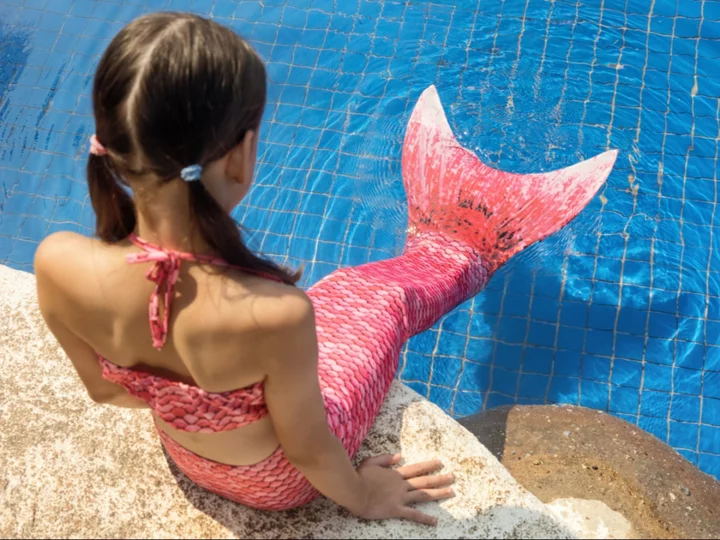
Father issues warning about mermaid tail swimsuits after five-year-old daughter almost drowns
A father has issued a safety warning about mermaid swimming outfits after his five-year-old daughter nearly drowned. Adam Lisberg initially shared the warning on Twitter in July 2020, where he’d recounted the events that led to his daughter being hospitalised for two days. According to Lisberg, the “scary story” revolved around his daughter Annabelle and her older sister Ruby, seven, both of whom “love mermaids”. “This is a scary story starring my daughter Annabelle. I’m telling it as a warning about kids, pools and swimsuits because I don’t want anyone else’s kids to end up in the ER or the ICU, like she did for two days,” Lisberg began the Twitter thread, which included a photo of his daughter in a hospital bed. In subsequent tweets, the father-of-three explained that he and his wife had ordered their daughters two-piece swimsuits with matching mermaid tails after getting an inflatable pool for the driveway. Lisberg then shared a photo of the paddling pool in question, which featured water that reached only up to the childrens’ legs. In the post, Lisberg noted that he and his wife “know to be careful” and “know kids can drown in anything” and to “watch them”. “Still, things can happen,” he wrote. According to Lisberg,the incident occurred while his daughters were playing in the pool while wearing their mermaid swimsuits and he was in the kitchen. “Sunday afternoon, the mermaids were in the pool. I was in the kitchen overlooking the pool, window open so I could hear them, looking at them every minute or two,” he wrote. “Then Ruby came inside and told me calmly that Annabelle was underwater and wasn’t moving, so she pulled her out.” Lisberg said that he looked outside to find his five-year-old daughter lying on the ground beside the pool with her arms inside her mermaid tail and “not moving”. After rushing outside, Lisberg said he picked up his daughter, who “didn’t react,” despite her eyes being “wide open”. In the emotional Twitter thread, the father then recalled hearing his daughter cough a little while questioning how long she’d been under the water and “what no oxygen to the brain looks like”. According to Lisberg, he began to perform CPR that he’d learned when his daughter was born, at which point Annabelle began to cry and cough. “Water, mucus, then vomit. This is all good,” he wrote. At this point, Lisberg revealed that he’d called 911, and that Annabelle had begun to cry but still wasn’t able to form words. The father then explained what had happened, as told to him later by his daughters. “Ruby said Annabelle pulled that mermaid tail up to her shoulders and tucked her arms inside. And as Annabelle told us later, she tried to ‘play potato’ by lying down in the water. But she couldn’t reach her hands out to get up,” he wrote. “Annabelle said she tried to talk, but the words just turned into bubbles. I will never get that image out of my head.” In the Twitter thread, Lisberg then credited his eldest daughter for saving Annabelle’s life, as the seven year old had seen that her younger sister “wasn’t coming up”, at which point she pulled the five-year-old’s head out of the water, before pulling her completely out of the pool. “She guessed Annabelle was only under for about 30 seconds,” he wrote, before adding that paramedics arrived within five minutes and measured “good blood oxygen” levels as Annabelle began to recover. However, despite spending just 30 seconds underwater, Lisberg said the five year old had to spend two days in the paediatric ICU. “Even a little water in the lungs, especially if it has chlorine, can spark a delayed reaction as the body fights injury,” he wrote. “She had a temperature and elevated pulse and breathing for almost a day after. Needed oxygen to kick it.” According to Lisberg, when Annabelle came home, she was the “same giggly bubbly silly sparkly girl she was,” with the father-of-three noting that his family is “indescribably lucky”. “I cannot imagine what it’s like to be the parent who didn’t get lucky like this,” he wrote. Lisberg concluded the Twitter thread thanking those who had read it before admitting that he hopes it “haunts” them. “So, thank you for reading this. Frankly, I hope this haunts you. I share it because I want you to never take any kids’ safety for granted, especially in water, no matter how shallow, even for a minute,” he wrote. “And maybe skip the mermaid tail. She’ll be okay without it.” According to the Centers for Disease Control and Prevention (CDC), more children ages one to four die from drowning than any other cause of death in the United States, and for children ages five to 14, drowning is the second leading cause of “unintentional injury death” after car crashes. Speaking toToday about the experience, Lisberg said that his daughters had owned similar swimsuits in the past, and that he and his wife had thought they would be safe because the pool was “two feet deep”. “Even if they sit down they can get themselves up,” he explained. He also noted that he’d been aware, like “every parent,” that you have to watch children “like a hawk and you have to be careful all the time”, but that he’d thought it would be okay for him to watch from the kitchen as he supervised his five-year-old son’s attempt to make guacamole. Lisberg also shared the fear he’d felt when he reached his daughter, with the father-of-three admitting that he’d “thought she was dead”. As for the quick response of his daughter Ruby, Lisberg described his eldest daughter’s rescue as “incredible”. “She got her sister completely out of the water. It was incredible,” he said, adding that the seven-year-old’s first instinct had been to protect her sister and “she did”. In addition to avoiding swimsuits that may obstruct a child’s ability to move, a swim instructor recently warned parents against buying blue bathing suits for their children. @scarnati.swim Just dont do it! Why think about which bathing suits for the splash pad? Just buy bright ones!! ☀️☀️ #selfrescue #selfrescueswimming #selfrescueswim #watersafety #drowningpreventionawareness #springhillisd ♬ original sound - According to Nikki Scarnati, a certified ISR (infant swimming resource) instructor who goes by the username @springhill.isr on TikTok, blue bathing suits can make it difficult to see a child underwater. The Independent has contacted Lisberg for comment. Read More Experts advise on how to stay safe while swimming in open water Children’s swim instructor issues warning about blue bathing suits Father issues warning about mermaid tail swimsuits after daughter almost drowns Why do I get sick when I go on holiday? How to check if you have skin cancer: Symptoms and signs to look out
2023-07-07 15:19
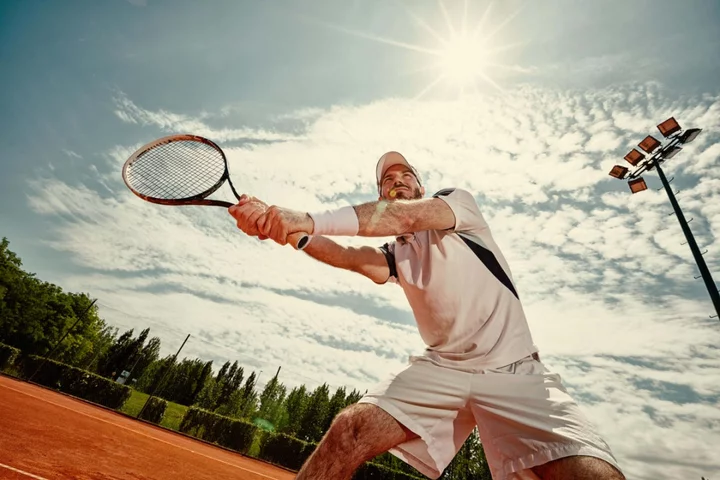
How tennis could be harming your body – and why it does you good
With Wimbledon underway and Nick Kyrgios already out due to injury, is tennis actually any good for you? Every tournament brings fresh injuries into the public eye, but the sport’s praises are often sung by fitness fans all over the world. So, how does it weigh up health and safety-wise? Is it worth investing some time in the sport if you enjoy Wimbledon? Tennis elbow The most common injury in tennis is tennis elbow, says Lucy Macdonald, physiotherapist at Octopus Clinic, and it’s something which has affected the likes of Andy Murray and Venus Williams. “Tennis elbow is the generic term for pain in the elbow, normally where irritation of the tendon runs over the elbow.,” she says. “It is often caused by a sudden overload on a tendon, in a way it is not used to, and it cannot cope with the forces that are on it. Treating it involves modifying what you are doing. “It can also be caused by other racket sports, and even things like breastfeeding a baby or cutting hedges and gardening,” she explains. But, it isn’t the end of tennis dreams. You can treat it. “Do not completely rest, modify the load going through the elbow, reduce the frequency and longevity of playing tennis, but things like physical support and tape can also help. “Changing your technique to take pressure off the tendon can help,” Macdonald explains. “The long-term treatment is to gradually build up the resilience of the tendon – a top spin stroke adds the most pressure – and alongside that, use static contractions – exercises that are just contracting the muscle, holding it and then relaxing.” Wrist injuries Kyrgios has pulled out of Wimbledon already, due to a wrist injury. “People may get wrist injuries if they fall and fracture the wrist. Or if they get a repetitive strain injury – if you use your wrist a lot in terms of the strokes you use with a lot of topspin – you can get some overuse and cause a flare up,” says Macdonald. Ankles and knees “Being on a slippery court, it can be easy to go over on your ankle,” she continues. “It happens in a lot of sports, if you’re running for a ball or trying to change direction. “You might get some knee problems, as they take such a hit generally with any propulsive sport – you get wear and tear on the knees, and sudden twists could impact your medial meniscus. Strength training is the best thing for that.” The benefits Should you be worried about all these injuries if you want to start playing, though? “The main cause of injuries in tennis is the sporadic nature people play it. If they suddenly go and play once every few months, the body is not used to the movements required in tennis, ” Macdonald notes.“You may suddenly run across the court and strain your calf or rupture your Achilles, because you haven’t run in months. “If you play it regularly and are consistent with the amount you play, it can be really beneficial,” she says.Any exercise is good, but the social aspect of tennis is hugely motivating, if you’re meeting up with three friends to play tennis, you have to show up – it gets you exercising regularly if you do it consistently. Tennis is beneficial for “increasing your heart and breathing rate, which is really good for your cardio and respiratory system. It keeps the range of motion in your shoulders, improves your balance with direction changes, and reduces your risk of falling,” says Macdonald. So, don’t let the risk of injury put you off. “There are so many positives that outweigh the negatives. Exercise, in general, extends your life span, and every illness out there is reduced by doing exercise. Even though it may have some impact on our musculoskeletal system, it is overwhelmingly positive for your mental and physical health.”
2023-07-04 19:55
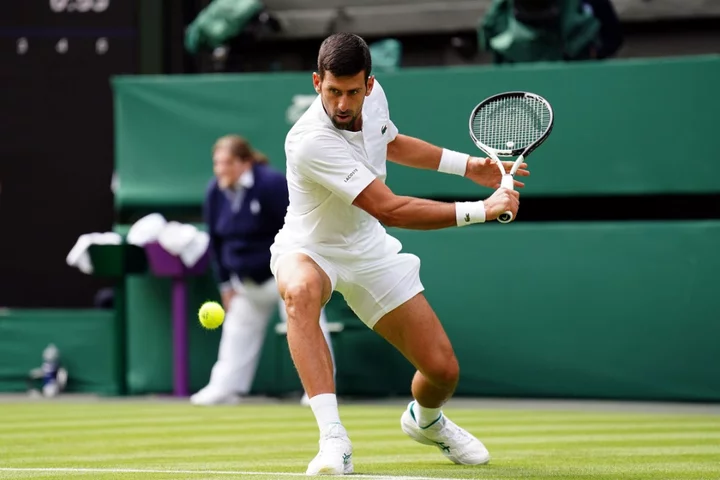
This is how Novak Djokovic is preparing to win Wimbledon
Tennis won Novak Djokovic over when he was just four years old. Since then, the Serbian professional tennis player established himself as a reigning men’s champion. In July 2006, he won his first Association of Tennis Professionals (ATP) event, and reached the semi-finals at Wimbledon and the French Open a year later. The 36-year-old also advanced to the finals of the US Open in 2007, but lost in straight sets to the former Swiss professional tennis player Roger Federer. He managed to win his first Grand Slam tournament at the Australian Open and was awarded a bronze medal at the 2008 Beijing Olympics. Though Djokovic’s performance has plateaued at some points, his hot streak has continued over the last 16 years. He claimed his 21st Grand Slam championship after winning Wimbledon in 2022 and gained his 10th title at the Australian Open, crowning both him and Rafael Nadal with the most Grand Slam men’s singles championships. With the 2023 Wimbledon Championships in full swing until July 16, how will Djokovic prepare himself both mentally and physically to win? Diet Djokovic starts his day with raw celery juice — which has anti-inflammatory properties – and sometimes drinks it before, during and after matches. Celery is about 90% water, so it’s great for hydration first thing in the day, especially when you don’t feel like chugging down a glass of water. On other occasions, he drinks the green goddess smoothie, “which is a load of green things chucked in and blended. In the food industry, you can get green goddess dressings, sauces and juices, which all have kale, spinach, peas, mint, cucumber, apple and spirulina powder all blended into one”, says celebrity private chef Ethan Russell. And for breakfast, Djokovic would normally eat a power bowl — it’s got a lot of healthy fats, grains, and fruit in it — or have it as a snack before exercising. The clear number one rule is being gluten and dairy-free. “It’s a choice many athletes make, especially if they want to feel and perform their best. Gluten and dairy can cause irritation,” Russell says. There are so many different dairy and protein alternatives at the moment, such as coconut, soy and almond. “The bowl has different types of grains, gluten-free granola — with pumpkin seeds and goji berries — then a low sugar style muesli,” he adds.“If you are an athlete and trying to keep your sugar low, you can opt for dairy-free yoghurt and manuka honey, which is quite expensive and very sought after, with its anti-inflammatory properties. People use it in food and skincare, making it a super food. The bowl is then topped with blueberries and strawberries, packed with natural sugars.” Warming-up Djokovic would usually start warming-up with his physiotherapist, then move onto to mobilisation and movement exercises, to minimise the risk of major injuries. Warm-ups can be anything from the running man, squat reaches to the sky and lunge rotations, all of which encourage great blood circulation. A match can last one and a half hours, and there are so many things to manage on match days, according to Mark Taylor, who coaches British tennis player Ryan Peniston and also works at the Junior Tennis Coaching academy. “They play all year round and often under immense pressure. It’s why I also work with a sports psychologist,” he says. Mindfulness Djokovic is heavily into mindfulness, and might begin his day with silent meditating — especially if he’s got an important game to focus on — in a grounded way, to promote mental clarity, calm focus and energy. “Most of us find it difficult to sit still,” says Loren Peta, yoga teacher and personal trainer. “But gentle movement and box breathing — where you draw a box with your mind’s eye to help you stay present — is a great way to transition from a state of doing to state of being.” Whilst in conversation with former Spanish tennis player Alex Corretja at the The House of ASCIS event last Friday, Djokovic opened up about his mental health and wellbeing. “If we are talking about mental strength and preparation, and how it affects performance, I feel like half of the work is already done before you step out on to the court – also known as the battlefield,” Djokovic said. “It’s why I try to only peak at the biggest tournaments and take more time than I used to, to get my mind and body into perfect harmony. My body is responding differently than it was 10 years ago, so I have to be more specific with my preparation, work, training and recovery. I believe in a holistic approach to this sport, and everything else in life. “It’s about everything you do, eat, the relationships around you, how you perceive yourself, the traumas and emotions that are suppressed in you. I know for me, if I suppress something, it will always surface on the court. The more you put these things aside, the bigger the monster will become. “If you fail to prepare, it’s going to be a difficult mountain to climb during the match. Tennis isn’t a sprint, it’s a marathon as well.” Getting the right footwear There are certain things that are important to keep in your kit. But for Djokovic, his racket and shoes are the two most important items for every tennis player, especially at his level. Good shoes adapt to the way a tennis player moves their feet, to ensure the right support and exact comfort can be added, if required. For example, improved extra heel cushioning and ankle support. “The details [are important],” said Djokovic. “Every single thing matters. How you move, how you feel with your racket and shoes. You need to be comfortable with what you are wearing, because it’s going to help you perform and move better. “I probably move differently to most of the guys out there – even on grass, I slide. [So I need] really flexible shoes that allow me to stop when I need to stop, and change directions when I need to change directions. It can’t be too light or too heavy.” Read More Charity boss speaks out over ‘traumatic’ encounter with royal aide Ukraine war’s heaviest fight rages in east - follow live Money-saving ways to garden on a budget 8 budget-friendly ways to juggle childcare and work during holidays Dior’s couture show was the epitome of quiet luxury
2023-07-04 16:57
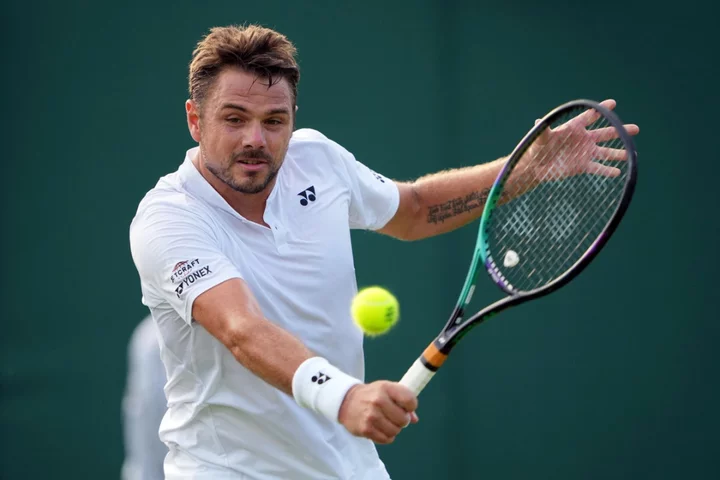
Stan Wawrinka on setbacks, preparing for Wimbledon and friendship with Roger Federer
With Wimbledon starting next week, Stan Wawrinka is excited about returning to London’s iconic championships. “It’s really a different tournament with the history, also the fact that we play on grass courts. The courts are amazing, the atmosphere is great,” he says on a video call from the All England Lawn Tennis and Croquet Club. Today, the Swiss player is taking a break from his gruelling training schedule to visit SW19 as part of his long-running partnership with Evian. “It’s always special for us players to go practise or to play matches on small courts as well, because you have so many fans coming and the atmosphere is always going to be special,” he continues, saying his most memorable Wimbledon match was against a certain Swiss opponent. “I played one quarter final against Roger [Federer] on Centre Court – it’s always special to play Roger, to play him here was something really nice.” Ahead of the famous championships, the 38-year-old has been training in Monaco, before heading back to London this week. So, how does the three-time Grand Slam winner balance the physical and psychological aspects of preparing for high-profile events? “It’s all a big puzzle,” says Wawrinka, who was born near Lausanne to a German father and Swiss mother. “As a tennis player, you have the fitness side and you have the mental part – you have everything that you need to do to be ready.” Plus, there’s the challenge of having to deal with defeats: “Tennis is a tough sport in the way that you end up almost every week losing. You need to accept [that you will] lose and try to learn and take something positive from it.” How does the former world number three cope with not winning? “I try to refocus on myself, try to also think about everything I’ve been doing in practice… you can lose against a better player. If you know you’re doing the right things, then you can only be positive about it.” Stan the Man (as he’s known to fans) isn’t fazed by comparisons to Federer – whom he’s beaten on just three of the 26 times they’ve competed on court. “I always look for the positive of the situation and I’ve been lucky enough that when I arrived [on the circuit] I was a little bit younger than him – he was already at the top,” says Wawrinka, who is three years younger than his record-breaking countryman. “For me, it was a chance to have Roger in the same country… I had the chance to practise with him and he became a friend.” The pair were victorious at the Davis Cup in 2014 and at the Beijing Olympics in 2008, taking gold in the men’s doubles. “The Olympics are something that any athlete in any sport dreams about, to play individually, but [playing] doubles and to feel like a team it was super special,” Wawrinka recalls. How does training for doubles matches compare to singles? “It’s more the mental part. You need to know your partner, talk with him a lot about the tactics, but more about what’s going to happen. “Communication is really important on the court, but also off the court. For us, it was quite easy to play together because we are such close friends.” Seen as a late bloomer in terms of tennis, Wawrinka admits it was a struggle waiting to achieve his inaugural Grand Slam title at the Australian Open in 2014. “For me, the most challenging part was to find the confidence in myself and in my game. I only won my first Grand Slam at 29 years old, it took me a while to really find that confidence.” Suffering setbacks throughout his career due to knee, elbow and foot injuries, Wawrinka’s ranking has yo-yoed in the past few years, but he returned to the world top 100 in February. “It was tough to be back at 37 years old after more than a year out for another two surgeries,” he says. “It was not easy, but for me, it’s about the passion. I love what I’m doing, I enjoy the process… it was, of course, so special to be back again in the top 100.” Off the court, he unwinds by spending time with daughter Alexia, 13, whom he shares with ex-wife Ilham Vuilloud, a Swiss TV presenter: “I’m traveling a lot so I don’t have that much time to be with her, so I’m trying to enjoy that.” Having grown up on his parents’ biodynamic farm, the tennis champ has inherited the green-fingered gene, growing fruit and veg in his garden back home in Switzerland. “I have tomatoes, courgettes, I have many fruits. I think it’s just different when you have your own garden than when you go buy it at the shop directly.” Reducing his impact on the environment is also a priority for the Evian global brand ambassador, which is why he’s pleased the water brand is introducing refillable bottles for players at Wimbledon for the first time this year. “It’s important for us, the players, [because] we’re traveling a lot – this new bottle is going to be great,” Wawrinka says. Two years away from 40 and with 16 career titles and 550 career wins under his belt, he’s not planning on hanging up his racket any time soon. “I’m still hoping to play a few more years on tour. It’s, of course, not easy, but I’m passionate about it. I want to enjoy it as much as I can,” Wawrinka says. “The time I will stop there will be no way back, so I need to really push and try to be as good as I can.” Evian, official water of the Championships, together with Wimbledon have launched a new refillable solution to hydrate players on court during this year’s tournament. Discover more at www.evian.com. Read More Charity boss speaks out over ‘traumatic’ encounter with royal aide Ukraine war’s heaviest fight rages in east - follow live Hacks for saving money on school uniforms King Charles and Queen Camilla surprise spa guests in bathrobes at eco-village Nearly 1.5m 18 and under referred for mental health support in 2022 – charity
2023-06-28 16:28
